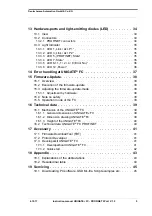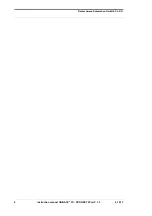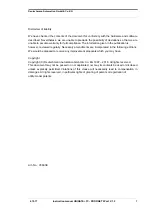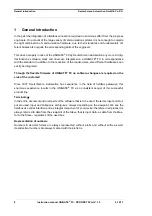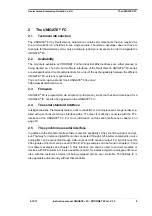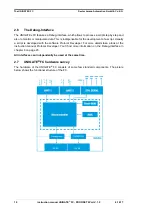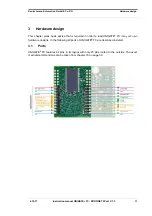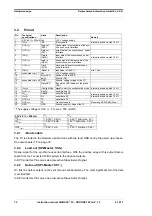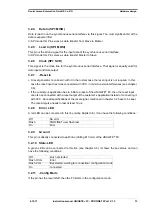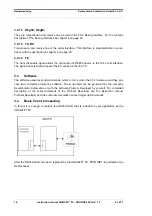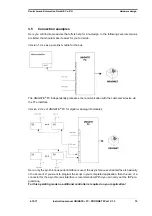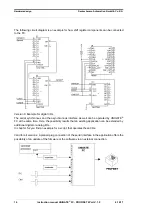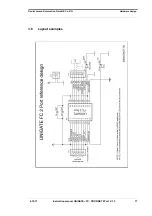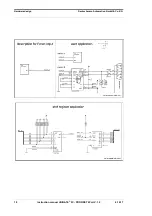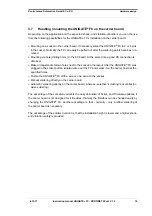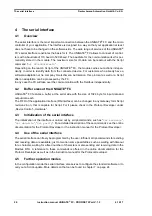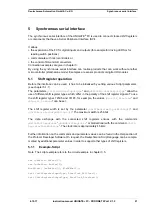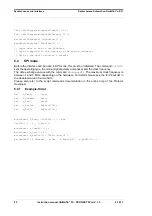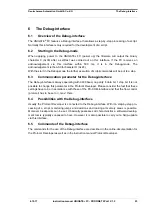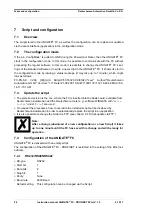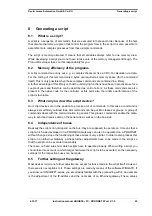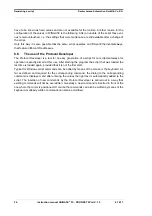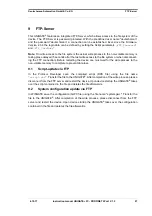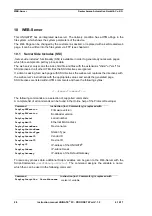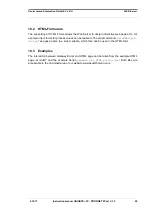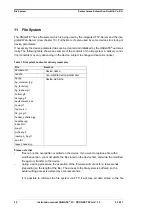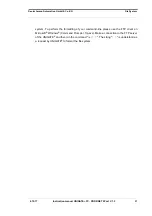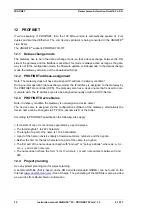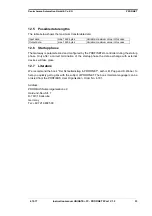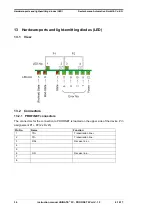
4.10.17
Instruction manual UNIGATE
®
FC - PROFINET 2Port V. 1.5
19
Deutschmann Automation GmbH & Co. KG
Hardware design
3.7
Handling (mounting the UNIGATE
®
FC on the carrier board)
Depending on the application and the expected shock- and vibration-conditions you can choose
from the following possibilities for the UNIGATE
®
FC’s installation on the carrier board:
•
Mounting on a socket in the carrier board. If necessary solder the UNIGATE
®
FC to 2 or 4 pins
in the socket. Normally the FC can easily be pulled out after the soldering points have been re-
moved.
•
Mounting via hole (drilling 3 mm) in the FC board. At the same time a good PE connection is
obtained.
•
Make arrangements for two holes next to the socket in the layout. After the UNIGATE
®
FC was
plugged in the socket pull an isolated wire over the FC and solder it on the carrier board at the
specified holes.
•
Fasten the UNIGATE
®
FC With a wire or a tie wrap on the socket.
•
Manual soldering directly on the carrier board.
•
Automatic soldering directly on the carrier board, whereas „selective“ soldering is essential (no
wave soldering)
The advantage of the socketed variant is the easy download of Script- and Firmware-updates, if
the carrier board is not designed for it. Besides, that way the Fieldbus can be changed easily by
changing the UNIGATE
®
FC. Another advantage is, that - normally - only a reflow soldering of
the carrier board is necessary.
The advantage of the soldered variant is, that the installation height is lower and a higher shock-
and vibration-safety is provided.

